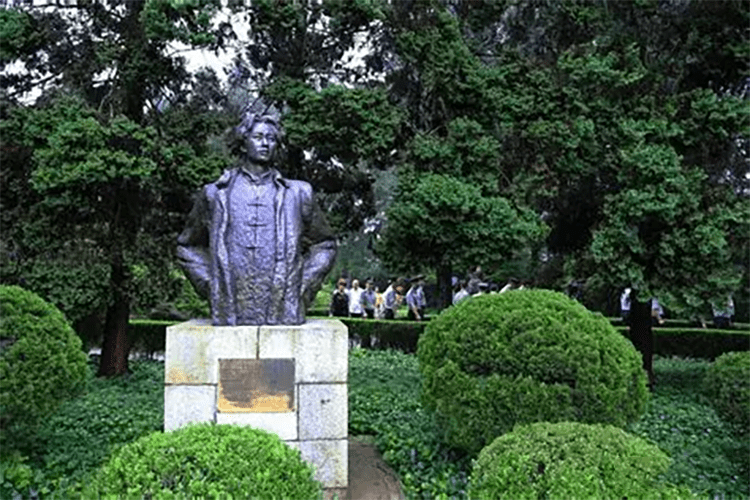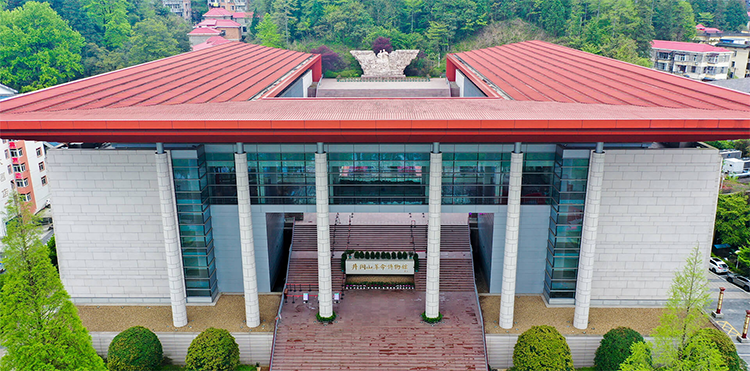Jinggangshan Revolutionary Museum: A Visitor’s Guide to China’s Red Cradle
Intro:
Stepping into the Jinggangshan Revolutionary Museum feels like opening a door to another time. The thunder of Huangyangjie’s artillery echoes in your ears, the dim oil lamp in the Octagonal Building still casts its glow over yellowed battle maps, and Mao Zedong’s inkstone holds a faint trace of ink—this is more than a display of artifacts; it’s an immersive theater of revolution. As China’s first local museum dedicated to revolutionary history, it presents 30,000 items and staged scenes that transport visitors back to 1927, when sparks of resistance became a nationwide blaze.
1. Red Sanctuary: A Repository of Revolutionary Memory
The Jinggangshan Revolutionary Museum is often called the “genetic archive” of China’s revolution, using panoramic storytelling to present the dramatic two years and four months of the Jinggangshan base. Founded in 1959, it has carried the special mission of preserving the memories of this “red cradle.” The main hall, modeled on traditional palace architecture, is solemn and symbolic—the eaves and brackets subtly reference the motif of a “single spark” igniting a prairie fire. Its 5,000 square-meter exhibition space reads like a three-dimensional textbook of revolutionary history. As a national first-class museum, its collection and historical value rank among the very best: from Zhu De’s grain pole to Red Army hand grenades, every object carries an irreplaceable piece of history.
2. Signature Treasures and Immersive Experiences
Among the many precious artifacts, three “witnesses of the revolution” are must-sees:
– Octagonal Building oil lamp: This rusted oil lamp in a glass case once lit the desk where Mao Zedong wrote “Why the Red Political Power in China Can Exist.” The charred wick seems to hold the breath of that sleepless night of thought.
– Huangyangjie mortar: This famed mortar, with only three remaining shells, is presented with AR technology to recreate the 1928 underdog battle. Put on the AR goggles and witness how the Red Army repelled a force ten times its size using rolling logs and stones.
– Zhu–Mao reunion reconstruction: A life-size recreation of Longjiang Academy uses holographic projection to re-stage the historic handshake between Zhu De and Mao Zedong. The animated base map behind them reveals the strategy of “surrounding the cities from the countryside.”
The permanent exhibition “History of the Jinggangshan Revolutionary Struggle” employs five-sense narration: in the “grain-carrying path” you can touch coarse straw sandals; crossing the hanging bridge you feel the boards sway; even the exhibition air is kept slightly humid to echo mountain conditions.
3. Architecture, Layout, and Spiritual Space
The museum’s five main halls align with the mountain’s “Five-Finger Peaks,” and the visitor route mirrors the revolutionary march. The third hall’s “500-li Jinggang” giant terrain model is a visual highlight—LED strips trace the Red Army’s routes in real time. For the best panoramic photos, stand at the viewing platform next to the right-hand entrance pillar. You’ll also notice display cases are generally lower than in conventional museums—an intentional design choice allowing visitors to view artifacts in a posture of reverence.

4. Practical Visitor Guide
– Smart tours: English audio guides provide a three-hour in-depth narration (deposit 100 RMB). There is a bilingual guided tour every Tuesday at 10:00. Download the official app beforehand to watch short “artifact story” videos.
– Recommended routes:
– Quick tour (1.5 hours): Central Hall → Zhu–Mao Reunion Hall → Huangyangjie AR → Victory Plaza
– Study route (4 hours): A systematic visit organized around three themes—”Armed Base Building,” “Land Revolution,” and “Party Building.”
– Tips: Closed Mondays (except public holidays). The special exhibition “Women Red Army of Jinggangshan” requires a separate ticket. The second-floor screening room shows a 4K-restored documentary “Jinggangshan” daily at 14:00 with Chinese and English subtitles.
5. The Red Tourism Ecosystem
The museum sits in the center of Ciping Town; within a 15-minute walk you can connect to:
– Southeast: Mao Zedong’s former residence (see the single wick lamp where he worked)
– Northwest: Jinggangshan Revolutionary Martyrs’ Cemetery (the monument amid morning mists is especially dramatic)
Nearby eateries such as the “Red Army Restaurant” serve pumpkin soup and red rice; paying with the souvenir “Red Army ration ticket” coin adds ceremonial fun.

Conclusion:
When the setting sun gilds the museum’s grey tiles and you look back at the torch-shaped main sculpture, you’ll understand why this place is called the spiritual home of Communist Party members. It records history and also bridges time and belief—touch original Red Army slogans with your children, debate the muskets and shuttles displayed in cases with friends, or buy a five-pointed star bookmark from the museum shop. Each action is a vivid tribute to that turbulent era. Allow at least half a day to let this red memory settle into a lasting travel impression.


